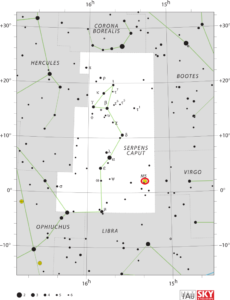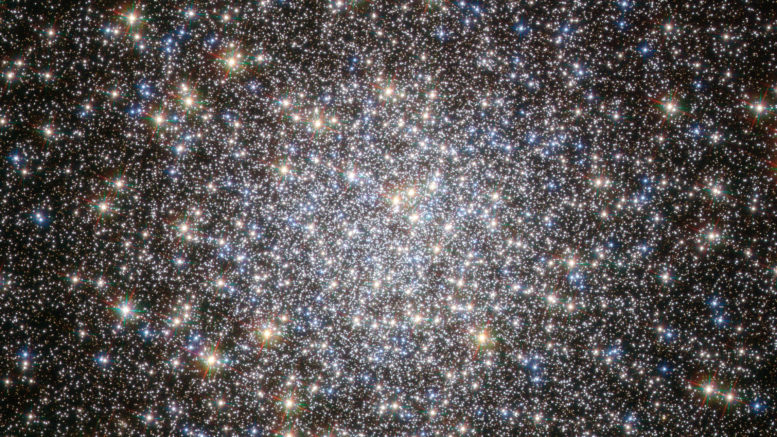This review of Messier 5 is to provide details about the observational history, details about how to find it in the sky, what the object could look like in your scope, and potential astrophotography options if available.
At 13 billion years of age, M5 is believed to be one of the oldest globular clusters in our galaxy, which is more than twice the age of our Solar System.
| Description | |
| Visible From Pacific Northwest | March To August |
| Best Time To Observe | June |
| Minimum Size Of Viewing Device | Small Telescope |
| Object Type | Globular Cluster |
| Designations | Messier 5, M5, NGC 5904, GCl 34, C 1516+022 |
| Right Ascension | 15h 18m 33.22s |
| Declination | +02°04’51.7” |
| Constellation | Serpens |
| Absolute magnitude | 12.3 |
| Apparent magnitude | +6.65 |
| Apparent dimensions | 23′ |
| Object Radius | 80 light years |
| Distance From Earth | 24,500 light years |
History
Messier 5 was discovered by German astronomer Gottfried Kirch in 1702 when he was observing a comet. Charles Messier also noted it in 1764, but thought it was a nebula without any stars associated with it. William Herschel was the first to resolve individual stars in the cluster in 1791, counting roughly 200.
Locating M5 In The Sky
One way to locate the M5 cluster is to find the stars Arcturus and Antares, the brightest star in Scorpius. M5 lies about 1/3 of the distance between the two stars, which means it located 23 degrees to the southeast of Arcturus.
Another way is to use the following technique:
“M5 is located in the constellation Serpens Caput (the Serpent’s Head). It is highest up in the south at about 10 p.m (11 p.m. daylight saving time) in mid-June. Because the stars (and star clusters) return to the same place in the sky some two hours earlier with each passing month, it’s highest in the sky around 8 p.m. (9 p.m. daylight saving time) in mid-July.
Using a fist at an arm’s length for a guide, M5 resides a good two fist-widths to the southeast of yellow-orange Arcturus, summertime’s brightest star. M5 is also three fist-widths to the east of blue-white Spica, the brightest star in the constellation Virgo.”[1]

Viewing M5
Under ideal viewing conditions, M5 can be spotted with the naked eye. It will appear as a faint point of light, located about 5° to the south-east of Alpha Serpentis. Using binoculars, spotting M5 is easy since it will appear quite bright, even under urban skies. However, it will be difficult to resolve because it is so dense.
Small telescopes will also have difficulty resolving this globular cluster, but will begin to pick out edge stars and notice that its shape is not quite round. Larger aperture telescopes will easily begin resolution and notice that nearby 5 Serpentis is also a double star.
Photographing M5
Photographing M5 can be tough to find details on how others have done it on their builds. However, what it will take is guiding from a large telescope over several hours with RGB filters. An example of what is possible can be found with this astrobin shot, which saw an Orion 10″ Ritchey-Chretien used to provide an amazing astrophotograph!
Sources And Further Reading
Our reviews of Messier Objects can be found here for those looking for a full list.
[1] = https://earthsky.org/clusters-nebulae-galaxies/m5-best-globular-cluster-for-small-telescopes

Be the first to comment on "Messier 5"